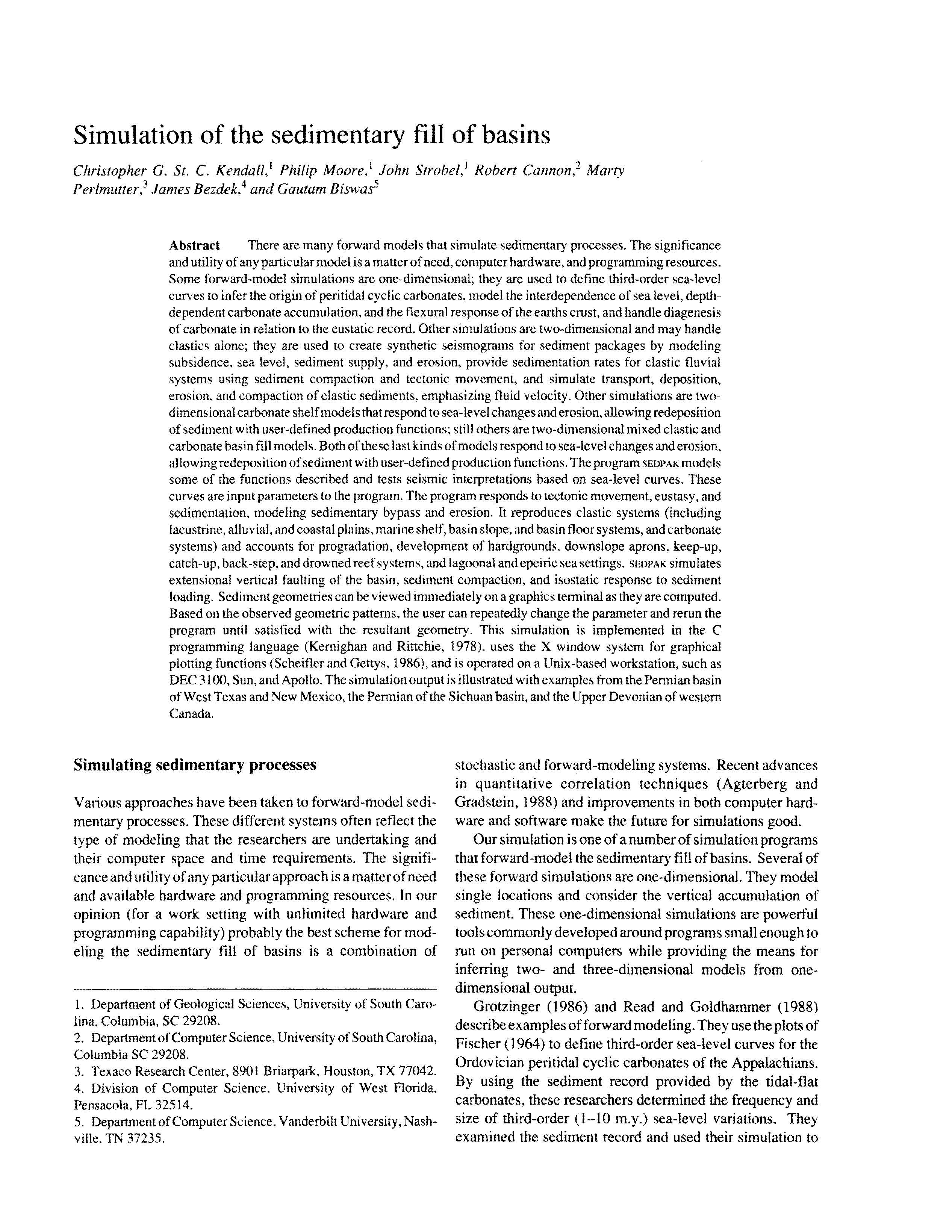Simulation of the sedimentary fill of basins
DOI:
https://doi.org/10.17161/kgsbulletin.no.233.20446Abstract
There are many forward models that simulate sedimentary processes. The significance and utility of any particular model is a matter of need, computer hardware, and programming resources. Some forward-model simulations are one-dimensional; they are used to define third-order sea-level curves to infer the origin of peritidal cyclic carbonates, model the interdependence of sea level, depth-dependent carbonate accumulation, and the flexural response of the earths crust, and handle diagenesis of carbonate in relation to the eustatic record. Other simulations are two-dimensional and may handle clastics alone; they are used to create synthetic seismograms for sediment packages by modeling subsidence, sea level, sediment supply, and erosion, provide sedimentation rates for clastic fluvial systems using sediment compaction and tectonic movement, and simulate transport, deposition, erosion, and compaction of clastic sediments, emphasizing fluid velocity. Other simulations are two-dimensional carbonate shelf models that respond to sea-level changes and erosion, allowing redeposition of sediment with user-defined production functions; still others are two-dimensional mixed clastic and carbonate basin fill models. Both of these last kinds of models respond to sea-level changes and erosion, allowing redeposition of sediment with user-defined production functions. The program SEDPAK models some of the functions described and tests seismic interpretations based on sea-level curves. These curves are input parameters to the program. The program responds to tectonic movement, eustasy, and sedimentation, modeling sedimentary bypass and erosion. It reproduces clastic systems (including lacustrine, alluvial, and coastal plains, marine shelf, basin slope, and basin floor systems, and carbonate systems) and accounts for progradation, development of hardgrounds, downslope aprons, keep-up, catch-up, back-step, and drowned reef systems, and lagoonal and epeiric sea settings. SEDPAK simulates extensional vertical faulting of the basin, sediment compaction, and isostatic response to sediment loading. Sediment geometries can be viewed immediately on a graphics terminal as they are computed. Based on the observed geometric patterns, the user can repeatedly change the parameter and rerun the program until satisfied with the resultant geometry. This simulation is implemented in the C programming language (Kernighan and Ritchie, 1978), uses the X window system for graphical plotting functions (Scheifler and Gettys, 1986), and is operated on a Unix-based workstation, such as DEC 3 100, Sun, and Apollo. The simulation output is illustrated with examples from the Permian basin of West Texas and New Mexico, the Permian of the Sichuan basin, and the Upper Devonian of western Canada.
Downloads

